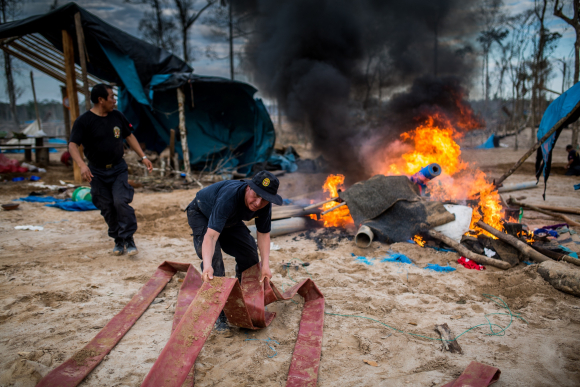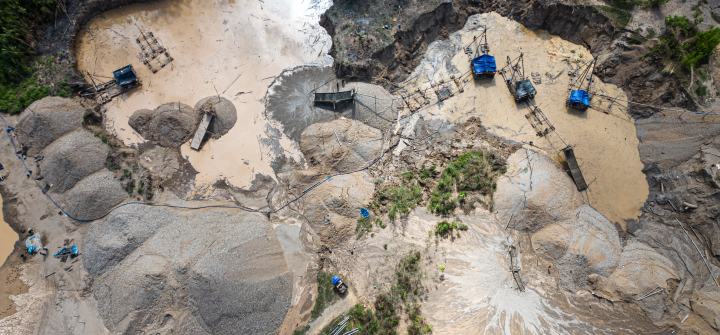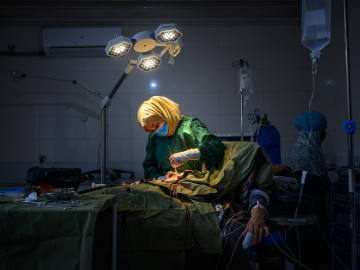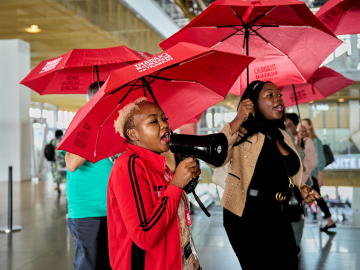Peru’s Illegal Mining Surges … and Destroys
LIMA, Peru—Soaring gold prices and plunging U.S. government funds are pushing Peru’s southeastern jungle into a public health crisis.
A longtime problem in the department of Madre de Dios, which borders Bolivia and Brazil, illegal mining is booming as gold prices top $3,000 per ounce. Illegal gold exports from Peru grew to $6.8 billion in 2024, surging 41% over 2023.
The gold rush requires a massive influx of workers and large amounts of mercury, which is used to extract gold from ore. The result has been destroyed forests, mercury poisoning, and fast-spreading infectious diseases, says Juan Pablo Murillo, MD, an infectious disease specialist and professor of preventive medicine and public health at Universidad Nacional Mayor de San Marcos.
The mining push has made Madre de Dios the fastest growing region in Peru—its population increased by 3.1% in the last year alone. The population surge and unsanitary conditions in makeshift mining camps have led to an increase in diseases like leishmaniasis (a parasitic disease spread by sand flies that can cause systemic infections and organ failure) and leptospirosis (a bacterial disease that can damage kidneys and cause liver failure). In addition, TB cases have spiked in Madre de Dios, which now has Peru’s highest TB prevalence.
Mercury is dumped in watersheds and rivers and is released into the air when the gold-mercury compound is heated to separate out gold. In a 2010 study, 94 of 103 residents of Huaypetue, a mining town, had detectable amounts of mercury in their blood. And more than half the population in Puerto Maldonado, Madre de Dios’ capital, has blood mercury levels that are double the WHO reference limit. Mercury can cause a long list of health problems, including impaired speech, hearing, and walking; memory loss; and tremors.
The U.S. government had supported efforts to limit illegal mining and its impacts on the environment and human health in Madre de Dios, says Luis Fernández, PhD, a tropical ecologist and executive director of Wake Forest University’s Center for Amazonian Scientific Innovation (CINCIA). Projects traced how mercury poisoned humans, reforested devastated areas, and worked with communities on ways to avoid fish species with the highest mercury levels. By helping slow the spread of illegal mines, U.S.-supported projects also reduced illicit activities intertwined with illegal mining, such as drug and wildlife trafficking.
U.S. support ended in January when USAID was shuttered. “The entire sector working on illegal gold mining and its causes has been affected,” says Fernández. “Taking money off the table will slow the fight against transnational organized crime. And with the price of gold above $3,000 an ounce—it is basically like throwing gasoline on an already hot fire.”
The elimination of U.S. funding came as CINCIA was ramping up mercury research in northern Loreto, another department that’s part of the Amazon basin. His team spent several weeks studying mercury levels in fish sold in markets there. “We are looking at all types of fish to come up with a snapshot about what we are seeing, because if there is a problem, it is going to be on their plates,” he says. “You cannot tell people not to eat fish, but education on [which types of fish] would be better for them.”
The work is continuing, thanks to other grants, but salaries have been cut and programs reduced to a minimum to stretch budgets, says Fernández.

Authorities set fire to machinery at an illegal gold mining camp in Madre de Dios, Peru on July 13, 2015. Sebastian Castaneda/Anadolu Agency/Getty Images
Eusebio Ríos, a leader of the Harakmbut Indigenous people, says communities know that fish have high levels of mercury, but fish make up the protein foundation of Indigenous diets throughout the Amazon basin.
“We need to understand much more about the impact, because it is so contaminating,” Ríos says. “It is a silent threat because you do not see it. We are consuming it without knowing it or how it will affect us in the future.”
Even if authorities managed to blunt the advance of illegal mining, Ríos warns the damage is already done. “Communities are already being affected because the mercury being dumped always makes its way into [the] Madre de Dios River basin,” he says.
While determining mercury levels is critical, Murillo says that an immediate complication is that there are few treatment options for people exposed to mercury. The most common treatment internationally for heavy metal poisoning is chelation therapy, which removes mercury from the blood. It is generally for severe cases. The therapy, however, is not available in Madre de Dios, and it would be prohibitively expensive if it were an option: One session can cost around $500.
“The population wants solutions, but there is nothing to offer in terms of therapeutic solutions,” Murillo says. “The best thing to do is reduce exposure, but these efforts are being cut back.”
This work included reducing the consumption of fish with the highest mercury levels—usually larger fish higher in the food chain—and trying to get miners to use techniques that do not require mercury to separate gold from ore. These techniques are more time-consuming and expensive, however.
While Peru’s government and institutions plan next steps, Fernández says the most effective strategy is for authorities to focus on policing and interdiction to prevent areas from being invaded by miners and to protect areas around Indigenous communities. The work, he says, gets harder with each dollar added to the price of an ounce of gold.
“Illegal mining is fast. It comes in, takes a place apart, and the damage is profound, leaving behind a toxic legacy,” Fernández says. “Mercury does not disappear, it goes somewhere. So, when we talk about human health, we know that it is going to continue affecting populations into the future.”
Editor’s Note: This article was produced in collaboration with Hopkins Bloomberg Public Health magazine and is the first in a series that examines front-line impacts of cuts in U.S. funding.
Join the 50,000+ subscribers in 170+ countries who rely on Global Health NOW summaries and exclusive articles for the latest public health news. Sign up for our free weekday newsletter, and please share the link with friends and colleagues.
Illegal gold mining in Peru’s Madre de Dios department has destroyed an average of 21,000 hectares of rainforest per year. May 31, 2024. Ernesto Benavides/AFP via Getty





